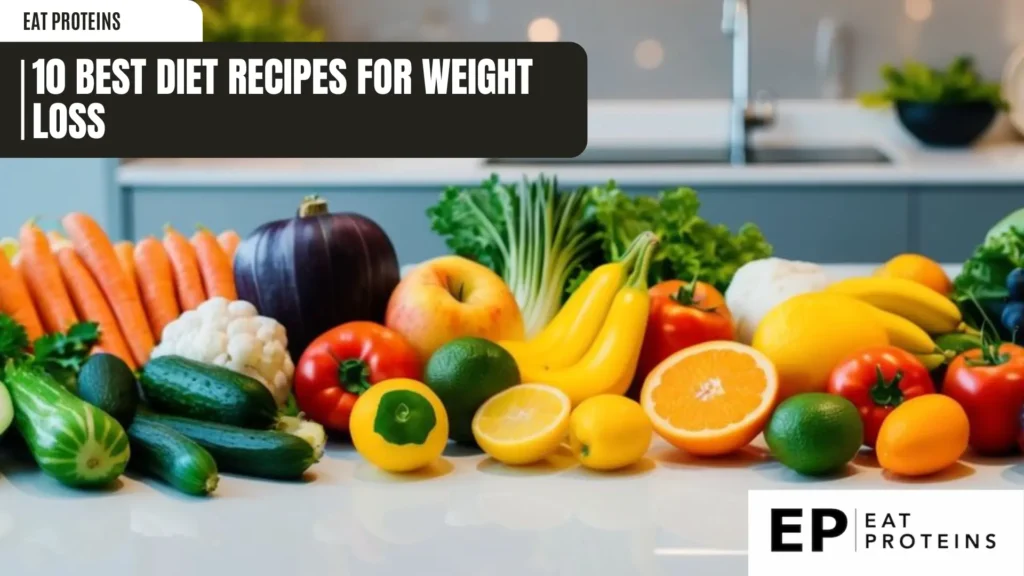
Finding the right recipes to support weight loss can be a challenge. In this article, I will share the 10 best diet recipes that not only help you lose weight but also satisfy your taste buds. These recipes are designed to be nutritious and easy to prepare, making it simpler to stick to a healthy eating plan.
Embracing a healthy diet doesn’t mean sacrificing flavor. I believe that delicious meals can contribute to successful weight management, making the journey more enjoyable. Each recipe focuses on wholesome ingredients, ensuring that you can enjoy your meals while working towards your weight loss goals.
1. Grilled Chicken Salad
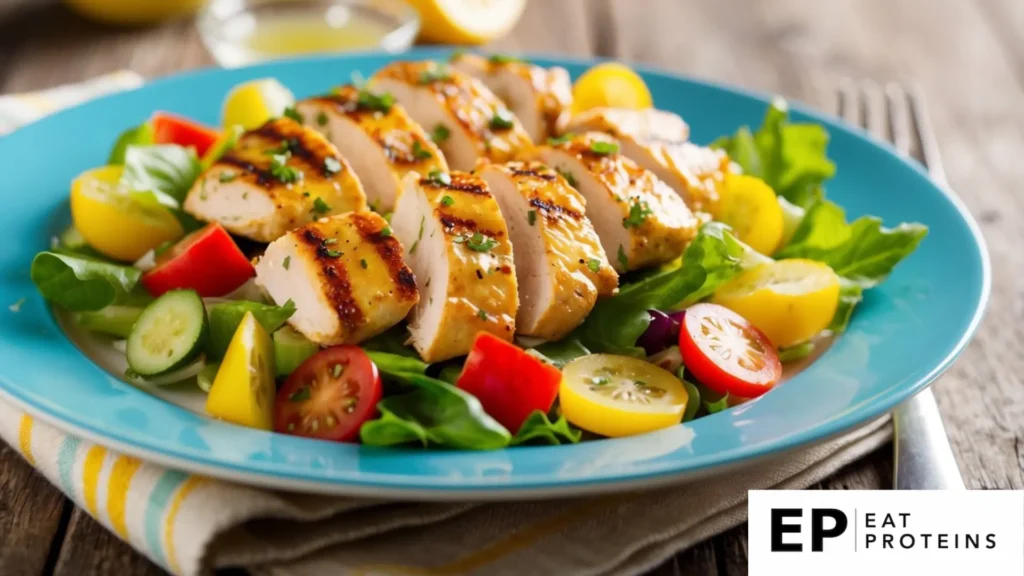
Grilled chicken salad is a healthy and satisfying dish that I enjoy making. It combines lean protein with fresh vegetables, making it a great option for weight loss.
To make this salad, I start with grilled chicken breast. I recommend using skinless chicken for a lighter meal. The grilling adds a nice flavor without extra fat.
I usually prepare the following ingredients: 1 grilled chicken breast, 2 cups of mixed greens, 1/2 cup of cherry tomatoes, 1/2 avocado, and a light vinaigrette dressing.
Here’s how I make it:
- First, I grill the chicken breast for about 6-7 minutes on each side until fully cooked.
- While the chicken is grilling, I wash and chop the vegetables.
- Once the chicken is done, I slice it into strips.
- Finally, I toss everything together in a bowl, adding the vinaigrette on top.
This salad is quick to prepare and can be customized with your favorite veggies. I like to keep it simple but nutritious.
2. Quinoa and Black Bean Stir-Fry
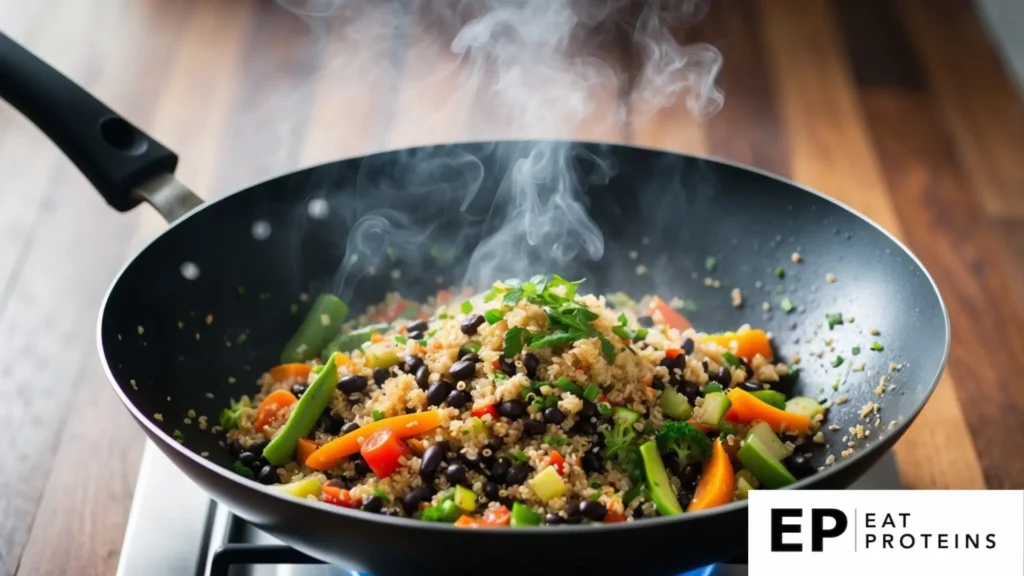
Quinoa and black bean stir-fry is a nutritious and tasty dish. Quinoa is a whole grain rich in protein, while black beans add fiber and essential nutrients. This meal is great for weight loss because it is low in calories and filling.
I find this stir-fry easy to make. In just a few simple steps, I can have a healthy meal ready. Here’s how I do it:
- Rinse 1 cup of quinoa under cold water.
- Cook the quinoa in 2 cups of water or broth for about 15 minutes.
- In a pan, heat 1 tablespoon of olive oil over medium heat.
- Add 1 diced onion and 2 minced garlic cloves; cook until soft.
- Stir in 1 can of drained black beans and 1 cup of mixed vegetables (like bell peppers and carrots).
- Mix in the cooked quinoa and season with salt and pepper to taste.
This dish cooks quickly and can be made in about 30 minutes. It’s a great option for meal prep, as it stores well in the fridge and tastes good reheated.
3. Zucchini Noodles with Pesto
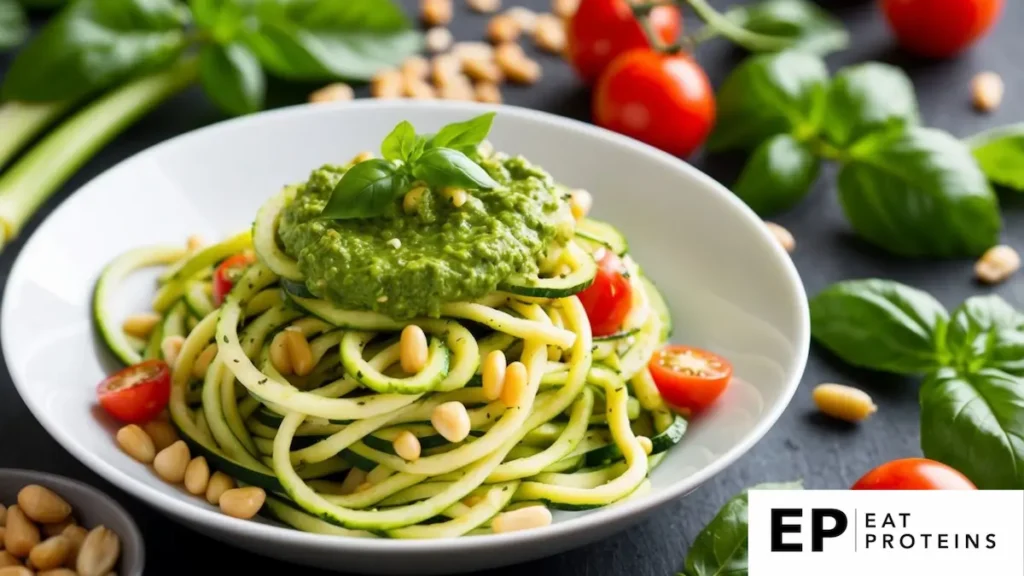
Zucchini noodles, or “zoodles,” are a healthy alternative to traditional pasta. They are low in calories and high in vitamins. I enjoy using them in various dishes, especially with pesto for added flavor.
Making zucchini noodles is easy. I use a spiralizer to create long, thin strands. You can also use a peeler or knife if you don’t have a spiralizer.
To prepare this dish, I follow these simple steps:
- Spiralize 2 medium zucchinis to create enough noodles for two servings.
- Sauté the zoodles in a pan with 1 tablespoon of olive oil over medium heat for about 3-5 minutes. I want them tender but not mushy.
- Add 1/4 cup of pesto. I prefer store-bought for convenience, but homemade is great too.
- Toss everything together and cook for another minute until warmed through.
I finish by adding a sprinkle of Parmesan cheese if desired. This dish is quick, delicious, and a great way to enjoy a nutritious meal.
4. Baked Salmon with Asparagus
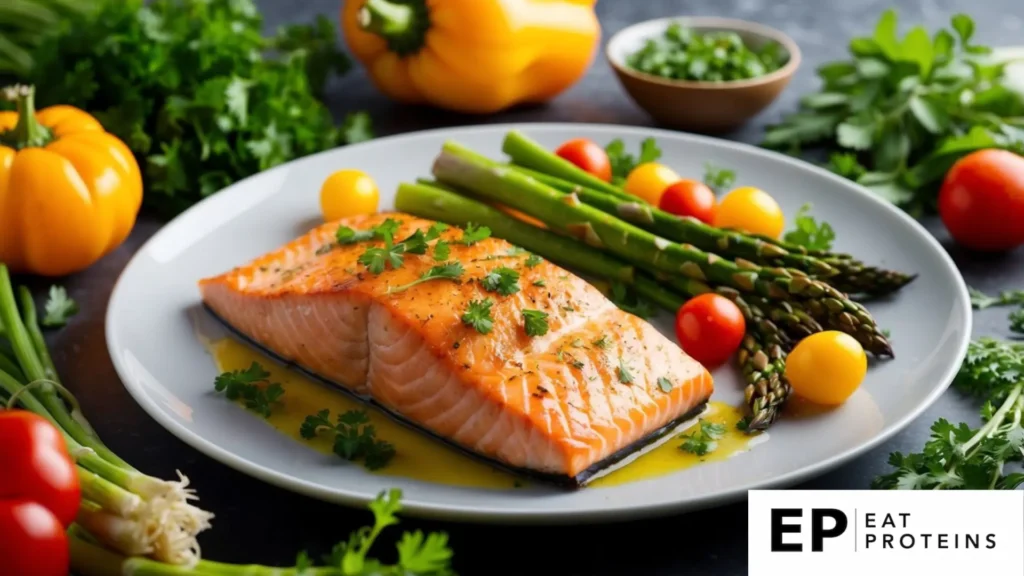
Baked salmon with asparagus is a simple and healthy dish. Salmon is rich in omega-3 fatty acids, which are good for heart health. Asparagus adds vitamins and minerals while providing a nice crunch.
To make this dish, I find it easy and quick. Here’s how I do it:
- Preheat the oven to 400°F (200°C).
- Line a baking sheet with parchment paper.
- Place salmon fillets and trimmed asparagus on the sheet.
- Drizzle olive oil, and sprinkle salt and pepper on both.
- Bake for 12-15 minutes until the salmon is cooked and the asparagus is tender.
This dish requires minimal prep and cooking time. It’s perfect for busy days when I want a nutritious meal without a lot of fuss. Baked salmon with asparagus satisfies my cravings while keeping my diet on track.
5. Chia Seed Pudding
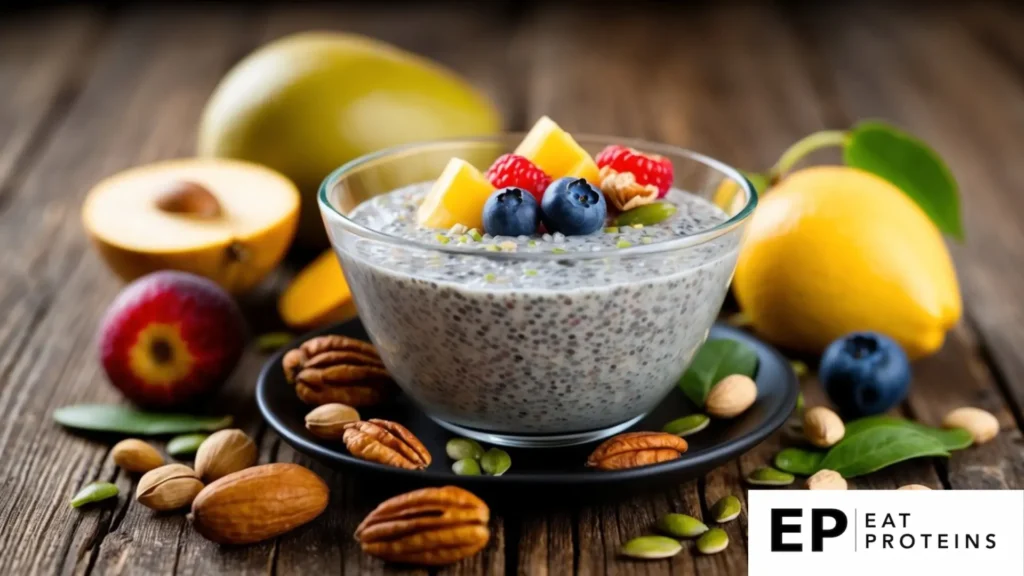
Chia seed pudding is a simple and nutritious option for weight loss. Chia seeds absorb liquid and become gel-like, making them perfect for a filling snack or breakfast.
I find it easy to make chia seed pudding at home. The basic recipe requires just a few ingredients. Here’s how I do it:
- In a bowl, combine 1/4 cup of chia seeds with 1 cup of milk or a milk alternative.
- Add 1 tablespoon of sweetener, like honey or maple syrup, for flavor.
- Stir well to avoid clumps, and let it sit for 5 minutes, then stir again.
- Cover and refrigerate for at least 2 hours or overnight.
After chilling, the pudding will be thick and ready to enjoy. I like to add toppings like fresh fruit, nuts, or a sprinkle of cinnamon for extra flavor. It’s a great way to start the day or have a healthy snack.
6. Turkey and Avocado Wrap

The Turkey and Avocado Wrap is a simple and tasty choice for weight loss. This dish combines lean turkey with healthy fats from avocado, making it both filling and nutritious.
I find this recipe easy to prepare. It takes only about 10 minutes from start to finish. You need just a few ingredients: whole wheat wrap, sliced turkey, avocado, lettuce, and any desired condiments.
Here are the steps to make it:
- Start with a whole wheat wrap as the base.
- Layer on 3-4 slices of turkey breast.
- Add a quarter of an avocado, sliced.
- Place a handful of lettuce on top.
- Add your choice of condiment, like mustard or hummus, for flavor.
- Roll the wrap tightly and slice it in half.
This wrap is perfect for lunch or a quick dinner. It’s a smart choice that satisfies hunger while staying on track with my diet goals.
7. Vegetable Lentil Soup

Vegetable lentil soup is a nutritious dish that I enjoy making. It is filled with lentils and various vegetables, offering a rich protein source and plenty of fiber. This soup is easy to prepare and can be a comforting meal.
To make vegetable lentil soup, I need a few simple ingredients. Typically, I use lentils, carrots, onions, celery, tomatoes, and spices. The cooking process usually takes around 30 to 40 minutes.
Here’s how I make it:
- First, I rinse 1 cup of lentils and set them aside.
- Next, I chop 1 onion, 2 carrots, and 2 celery stalks.
- In a pot, I sauté the vegetables in a bit of olive oil for about 5 minutes.
- Then, I add the lentils, 4 cups of vegetable broth, and season with salt, pepper, and herbs to my taste.
- I bring the mixture to a boil, then reduce to a simmer for 25 to 30 minutes, until the lentils are tender.
I often enjoy this soup with whole-grain bread for a filling and healthy meal.
8. Greek Yogurt Parfait
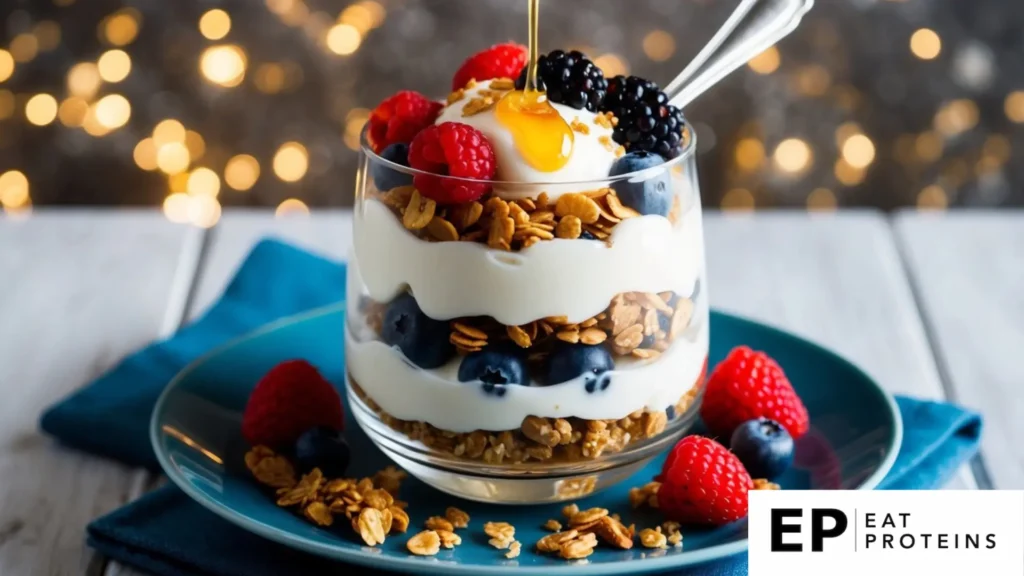
A Greek yogurt parfait is a layered dessert or snack made from Greek yogurt, fruits, nuts, and sometimes granola. It offers a nutritious option packed with protein and probiotics.
I find this recipe very easy to make. Gather your ingredients: plain Greek yogurt, your choice of fruits, nuts, and a sweetener like honey if desired.
To prepare, follow these simple steps:
- Choose a glass or bowl to layer your parfait.
- Start by adding a layer of Greek yogurt.
- Add a layer of your favorite fruits, such as berries or banana slices.
- Sprinkle a few nuts or granola on top.
- Repeat the layers until you reach the top of the glass.
This combination provides texture and flavor while being healthy. Enjoy it as a breakfast option or a quick snack. It can be made in just a few minutes, making it a great choice for busy days.
9. Stuffed Bell Peppers
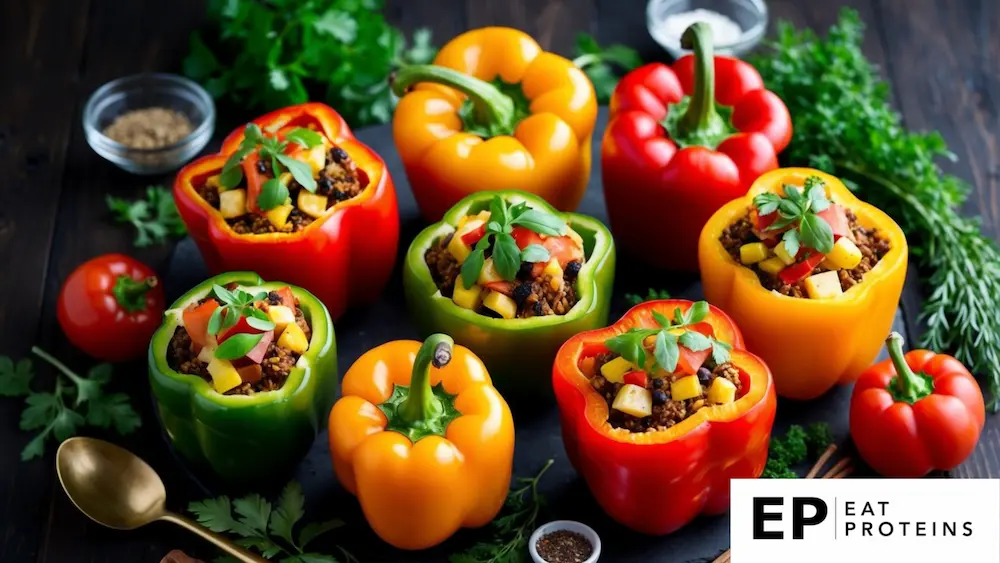
Stuffed bell peppers are a nutritious and satisfying dish. They are made by hollowing out bell peppers and filling them with a mixture of ingredients. This healthy option is simple to prepare and can be customized to suit my taste.
To make stuffed bell peppers, I start by preheating my oven to 375°F (190°C). I then choose vibrant bell peppers, typically green, red, or yellow. I cut the tops off and remove the seeds.
Next, I prepare a filling. I often use cooked brown rice, lean ground turkey or beef, and diced tomatoes. I mix in spices such as cumin, garlic powder, and salt for flavor.
After mixing the filling, I fill each pepper with this mixture. I place the peppers upright in a baking dish and add a little marinara sauce on top if I like.
I cover the dish with foil and bake it for 30 minutes. Then, I remove the foil and bake for an additional 15 minutes until the peppers are tender. Stuffed bell peppers are a great meal that’s both flavorful and healthy.
10. Oven-Baked Sweet Potato Fries
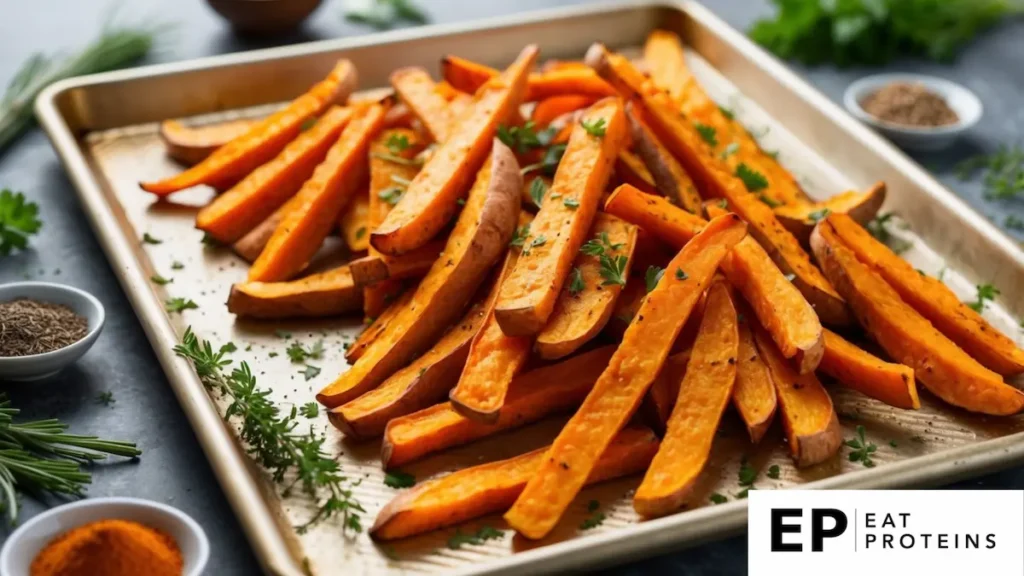
Oven-baked sweet potato fries are a tasty and healthier alternative to regular fries. They are made from sweet potatoes, which are rich in vitamins and minerals. This dish is simple to prepare and a great addition to my diet.
To make these fries, I start by preheating my oven to 425°F (220°C). Then, I peel and cut two medium sweet potatoes into thin strips.
Next, I toss the sweet potato strips in a bowl with one tablespoon of olive oil. I like to add a pinch of salt and some paprika for flavor. After mixing, I spread them evenly on a baking sheet lined with parchment paper.
I bake the fries for about 25-30 minutes, flipping them halfway through. This helps them cook evenly and become crispy.
Once done, I remove them from the oven and let them cool slightly. These sweet potato fries are perfect as a snack or a side dish. They are easy to customize with different spices to suit my taste preferences.
What Are the Benefits of Weight Loss Diets?
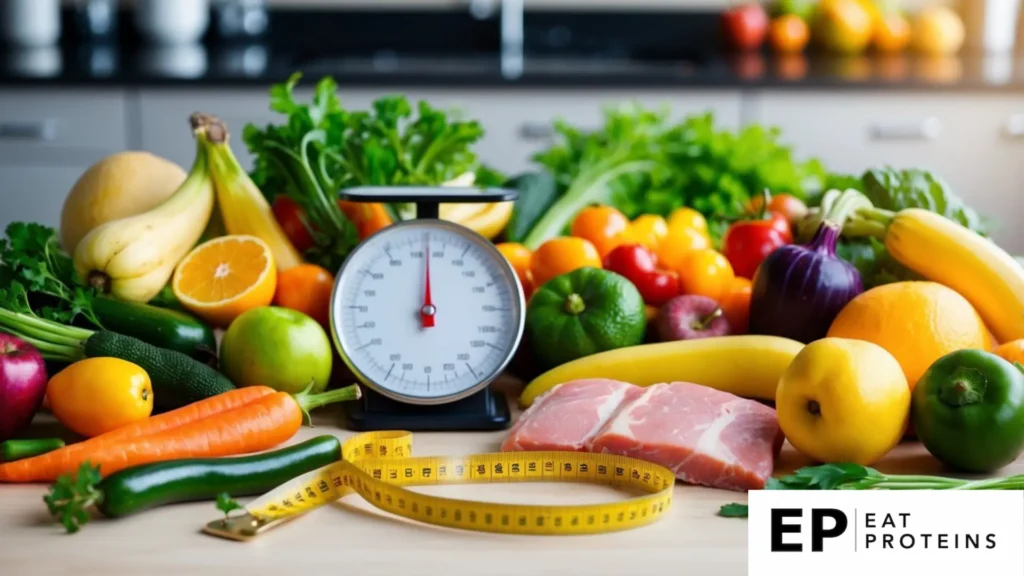
Weight loss diets offer various benefits that extend beyond just shedding pounds. These diets can lead to improved health markers, enhanced energy levels, and a lower risk of heart disease. Here are some specific advantages that I have identified.
What Is Improved Metabolic Health in a Weight Loss Diet?
Losing weight can significantly enhance my metabolic health. When I reduce excess body fat, especially around the abdomen, insulin sensitivity often improves. This means my body can use insulin more effectively, helping to regulate blood sugar levels. A study highlighted that achieving a weight loss of just 5-10% can lead to substantial health benefits, including lower cholesterol and blood pressure.
Additionally, weight loss can decrease inflammation in my body. This decrease often translates to fewer chronic diseases and a reduced risk of metabolic syndrome. As I lose weight, I also find that my body’s hormone levels stabilize, which contributes to overall metabolic balance.
How Does a Weight Loss Diet Enhance Energy Levels?
I’ve noticed that losing weight can lead to a significant boost in my energy levels. A lighter body requires less effort to move, making daily activities feel easier. This newfound energy can motivate me to engage in more physical activities, which is essential for maintaining weight loss.
Moreover, many weight loss diets are rich in nutrients. These foods not only help with weight management but also provide the vitamins and minerals needed for optimal energy production. With improved energy levels, I am more likely to stay active, which further supports my weight loss goals.
How Does a Weight Loss Diet Improve Heart Health?
Weight loss diets play a crucial role in improving heart health. When I lose weight, my heart does not have to work as hard. This can lead to lower blood pressure and improved cholesterol levels. Studies indicate that even modest weight loss can lead to a significant reduction in the risk of heart disease.
Additionally, many weight loss diets focus on heart-healthy foods. I tend to consume more fruits, vegetables, whole grains, and lean proteins. These foods are known to support cardiovascular health, thus further reducing my risk of heart issues. By maintaining a healthy weight, I can help ensure a healthier heart for years to come.
How to Choose the Right Diet Recipes?
Finding the right diet recipes is essential for successful weight loss. It involves selecting nutrient-dense foods and ensuring a good balance of macronutrients.
What Are Nutrient-Rich Ingredients in a Diet?
When choosing recipes, I focus on ingredients that offer high nutritional value. I look for foods that are rich in vitamins, minerals, and antioxidants. Whole grains, vegetables, lean proteins, and healthy fats are key components.
- Whole Grains: Foods like quinoa and brown rice provide fiber and energy.
- Vegetables: Leafy greens and colorful veggies add essential nutrients.
- Lean Proteins: Options such as chicken, fish, and legumes support muscle health.
- Healthy Fats: Avocados and nuts contribute to satiety.
By prioritizing these foods, I create meals that not only taste good but also support my weight loss goals.
How to Balance Macronutrients in a Diet?
A well-balanced recipe includes the right proportions of macronutrients: carbohydrates, proteins, and fats. I aim for a good mix in each meal.
- Carbohydrates: They should come from whole grains and fruits. They provide necessary energy.
- Proteins: Including quality protein in each dish helps with muscle repair and fullness.
- Fats: Healthy fats are essential for nutrient absorption and hormone regulation.
A balanced plate might look like this:
| Macronutrient | Example Sources |
|---|---|
| Carbohydrates | Quinoa, sweet potatoes |
| Proteins | Chicken breast, lentils |
| Fats | Olive oil, nuts |
By combining these elements wisely, I ensure my meals are satisfying and effective for weight loss.
What Are Common Mistakes to Avoid in Dieting?
When trying to lose weight, it’s easy to make mistakes that hinder progress. I have identified two key areas to focus on: skipping meals and overlooking portion control. Avoiding these errors can help improve the chances of successful weight loss.
Why Is Skipping Meals a Mistake in Dieting?
One common mistake is skipping meals. Many believe that avoiding food will help them lose weight faster. In reality, this often backfires. When I skip meals, my body goes into starvation mode and clings to fat. This slows my metabolism.
Instead of skipping meals, I find that eating smaller, balanced meals helps. Including proteins, whole grains, and healthy fats keeps me full and energized. Regular snacks, like fruits or nuts, can also prevent overeating later on.
Planning meals ahead of time helps me avoid last-minute decisions that lead to unhealthy choices. Staying consistent with my eating schedule is crucial for my weight loss efforts.
How Does Overlooking Portion Control Affect Dieting?
Another mistake I’ve made is overlooking portion sizes. I sometimes assume that healthy foods are always fine to eat in large amounts. However, even nutritious foods can contribute to weight gain if I consume them in excess.
To manage portions, I use smaller plates and bowls. This simple trick makes my meals feel larger. I also pay attention to serving sizes on labels. Measuring my food can prevent unintentional overeating.
I keep track of my meals through a food journal. This helps me understand my habits better and adjust portions as needed. Mindful eating also plays a big role. Focusing on my food without distractions allows me to enjoy each bite and recognize when I’m satisfied.
